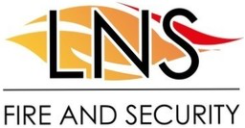An effective fire safety management system is composed of several elements, and it is easy to get carried away or miss out on something important while implementing it. The vital thing to remember while devising a fire safety management system is the creation of a safe environment for people within the premises. It includes an organisation’s strategy to implement, control, monitor, review and maintain fire safety standards and outlines the plans to effectively prevent fire and ways to protect people and property in the event of a fire. If you are looking for guidance on preparing a practical fire safety management strategy, here are some key points as per Article 11 of the Regulatory Reform Order 2005, which can help you create one. This information is without prejudice to the requirements of any enforcing authority.
Planning
This could include:
- How the “responsible person” proposes to undertake and conduct the fire safety risk assessment and determines priorities in eliminating hazards and reducing risks to people.
- Adoption of a systematic approach for conducting risk assessments and deciding priorities to set objectives for eliminating or reducing risks.
- Selection of appropriate measures for keeping risk under control.
- Establishment of performance standards.
- Implementation of protective and preventative measures.
Organisation
This will need details regarding:
- The way the health and safety information is communicated to employees.
- The role of employees in ensuring compliance with all aspects of the fire safety risk assessment.
- The responsible person who will take decisions regarding the protective and preventative measures and those involved in their implementation.
- Effective systems of communication to employees, other employers, or other responsible individuals.
- Securing competence by ensuring adequate instruction, information, and training.
- Information about protected areas/fire doors.
- Maintenance plans.
- Ways of preventing arson.
- Fire prevention and housekeeping measures.
- Information about practice sessions and fire drills.
- Evacuation/emergency plan.
- Fire safety risk assessment.
Control
This will essentially include identifying the individuals at each level that may be responsible for handling fire safety issues throughout the premises.
The control measures should be focused on:
- Ensuring sufficient supervision.
- Setting specific and measurable standards for judging performance.
- Ensuring the responsible people understand their assigned tasks.
- Clarifying health, safety, and fire safety responsibilities.
Monitoring
Firstly, it will determine how the person responsible will measure the success of the fire safety policy. The monitoring plan must also include details about regular revisions of fire precautions, investigations into causes of accidents, and recording other important information. Some other aspects of monitoring include:
- Recording all monitoring processes and activities.
- Ensuring all accidents are investigated, lessons are learnt, and procedures altered if need be.
- Preparing a plan and conducting routine inspections to ensure that measures are in place and being maintained.
Review
Under this, the organisation will need to identify a routine procedure for review that includes any identified deficiencies, and a process by which they can be corrected. The review should:
- Include a system that ensures that incomplete remedial work is given top priority and finished in time.
- Specify mechanisms for ensuring that remedial work is completed.
- Review the systems of management to make sure that they stay active.
In addition to the above, your organisation also needs to have a fire emergency plan in place. Some of the crucial elements of an effective fire emergency plan include:
- Clear, relevant information and instructions for staff, and employers of other people working in your business premises including contractors, about the prevention of fire and what to do in case of a fire.
- Co-operation and coordination with other responsible people who use any part of the premises.
- Provide information to the parents of any children employed by you, about the significant risks you have identified and the precautions you are taking.
- Firefighting arrangements.
- Identification of key escape routes, how people can access them and escape to a place of safety.
- Specific arrangements for high fire-risk areas.
- Arrangements for the safe evacuation of people considered particularly at risks, such as young people, lone workers, and people with disabilities.
- Information about any processes, appliances, machines and power supplies to be isolated or stopped in case of fire.
- The identity and responsibilities of staff that have specific duties in case of fire.
- Details of how the premises should be evacuated.
- Instructions for the staff in case of fire.
- Information about assembly points once people leave the premises and procedures for checking if the premises have been evacuated.
- Ways to warn people in case of fire.
- Plans for dealing with people after they leave the premises.
- Phased evacuation plans.
- Information about the training required for employees and arrangements for ensuring that it is given.
- Procedures for meeting the fire and rescue personnel upon arrival and notifying them of any special risks such as the location of highly flammable substances.
- Details on how the fire and rescue and other critical services will be contacted and deciding the responsible person for this.
- Contingency plans for when the life safety systems such as fire detection, evacuation lifts, and warning systems, smoke control systems, or sprinklers are out of order.
- Plans for dealing with possible severe weather conditions post-incident.
- Plans for evacuating people and retrieving their valuables if they are left in the building.
- Plans for taking care of unaccompanied children.
Fire safety in a workplace begins with planning and ensuring all the protocols set out are being followed and complied with. Organisations that have an efficient fire safety management strategy are more likely to be able to prevent fires or combat them with minimal damage to people and property.
To learn more about securing your business premises with the best fire and security systems, contact LNS on 0116 224 3478.

